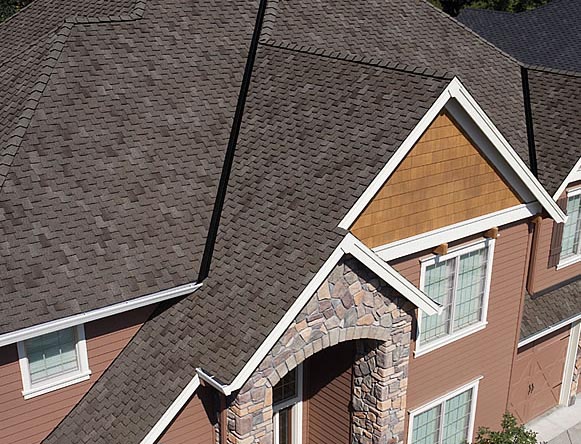Neighborhood Insights on Roofing Companies Gainesville Florida Homeowners Prefer
Neighborhood Insights on Roofing Companies Gainesville Florida Homeowners Prefer
Blog Article
Finest Practices for Ensuring Proper Roofing Air Flow
A well balanced intake and exhaust air vent ratio, generally 1:300, plays a critical duty, with intake vents ideally positioned at the reduced side of the roof for awesome air entrance and exhaust vents at the height for warm air departure. Maintaining insulation away from vents is important to prevent air flow limitation.
Understand Ventilation Fundamentals
Appropriately comprehending air flow fundamentals is vital for ensuring the longevity and effectiveness of roof systems. Reliable air flow reduces moisture buildup and temperature level extremes in the attic, both of which can lead to considerable structural damages over time. A well-ventilated roofing system aids in avoiding typical problems such as mold development, wood rot, and ice dams, which can jeopardize the stability of the roof materials and the underlying structures.
The primary goal of ventilation is to promote the motion of air, enabling a constant exchange in between the indoor and outdoor atmospheres. This equilibrium is achieved with a mix of intake and exhaust vents that collaborate to preserve optimum air movement. Intake vents, normally located along the eaves or soffits, permit fresh air to go into the attic space, while exhaust vents, frequently located at or near the roofing system ridge, enable warm, damp air to get away.
Trick variables affecting the efficiency of roofing air flow consist of appropriate positioning, adequate sizing, and guaranteeing that both consumption and exhaust vents are unobstructed. Normal examination and maintenance are important to determine potential blockages, damage, or ineffectiveness in the air flow system, thus protecting the roof's efficiency and longevity.
Sorts Of Roofing System Vents
Roof vents play a critical role in keeping efficient attic ventilation and, by extension, the general health of the roof system. Different types of roofing system vents are readily available, each with one-of-a-kind advantages tailored to specific roofing demands.

Soffit vents are installed under the eaves and operate in tandem with roof covering vents to make sure a well balanced intake and exhaust system. By permitting cooler air to enter from below, soffit vents assist in the expulsion of warm air via top vents. Gable vents, located on the exterior walls of the attic room, deal one more reliable solution, especially in homes with gable roofings.
Analyze Your Current Air Flow

Following, think about the age and problem of your roofing materials and ventilation components. Older systems might not follow existing building codes or may have degraded gradually, lowering their effectiveness. Conduct a detailed examination to identify any kind of indicators of damage, such as rust, damages, or gaps that can jeopardize the system's efficiency.
Furthermore, gauge the attic room temperature and humidity degrees. Heats and humidity can indicate poor ventilation - gainesville fl roofing companies. Utilize a hygrometer and thermometer to obtain exact analyses, comparing them with outside problems. Consistent discrepancies suggest possible issues that need attending to.
Setup Best Practices
Efficient installment of roofing ventilation systems is paramount for making certain optimal efficiency and long life. Correct installment starts with comprehending the particular air flow needs of the building and the roofing it covers. This involves computing the appropriate proportion of intake to tire vents, usually adhering to the 1:300 guideline, which specifies one square foot of ventilation for every 300 square feet of attic flooring space.

Intake vents should be set up at the roof covering's reduced side, frequently in the soffits, to allow great air to go into. Exhaust vents, on the other hand, should be mounted near or at the roof covering's peak to help with the leave of cozy, moist air.
Seal all air vent links thoroughly to stop air leakages and potential water seepage. Usage premium materials and comply with supplier guidelines to ensure durability and efficiency. In addition, integrating ridge vents with baffles can dramatically enhance air movement efficiency by avoiding wind-driven rainfall and snow from getting in the attic.
Ultimately, specific installation of roof air flow systems mitigates potential problems such as mold and mildew growth, ice dams, and structural damages, guaranteeing the roof covering's stability and the building's overall health.
Regular Upkeep Tips
Uniformity in upkeep methods is fundamental to making certain the long-term efficiency of roofing air flow systems. During these examinations, guarantee that vents are cost-free of particles, nests, and other obstructions that might i thought about this hinder air movement.
Utilize a soft brush or a vacuum cleaner to remove dirt and debris from intake and exhaust vents. Be careful not to damage the vent check here screens or louvers throughout the procedure.
Correct insulation is just as essential. Make sure that attic insulation does not obstruct the vents, as this can badly restrict air flow. Rearrange or replace it to preserve an effective obstacle. if any kind of insulation has actually changed or cleared up.
Lastly, replace any type of harmed or missing out on parts quickly. Damaged vents, split roof shingles, or tatty flashing can all add to poor ventilation and needs to be addressed right away. Normal upkeep makes certain that the roof covering air flow system operates efficiently, thus expanding the life-span of the roof covering itself.
Conclusion
Guaranteeing correct roof covering air flow is critical for keeping the efficiency and sturdiness of a roofing system. Adherence to the 1:300 consumption and exhaust vent ratio, coupled with the strategic placement of vents, is important. Routine biannual inspections, debris cleansing, and guaranteeing insulation does not obstruct air movement are important methods. Executing these ideal methods will foster a well-ventilated roofing system, thereby minimizing possible issues associated with moisture build-up and extreme warm, ultimately lengthening the roofing system's life-span.
A balanced intake and exhaust vent proportion, generally 1:300, plays a crucial role, with intake vents ideally placed at the reduced side of the roofing system for trendy air entry and exhaust vents at the top for warm air departure. Intake vents, normally situated along the eaves or soffits, allow fresh air to enter the attic room Our site area, while exhaust vents, typically situated at or near the roof covering ridge, allow warm, moist air to get away.
Soffit vents are set up under the eaves and job in tandem with roof covering vents to guarantee a balanced consumption and exhaust system. By allowing cooler air to get in from below, soffit vents help with the expulsion of hot air via top vents. Adherence to the 1:300 consumption and exhaust air vent proportion, combined with the calculated placement of vents, is essential.
Report this page